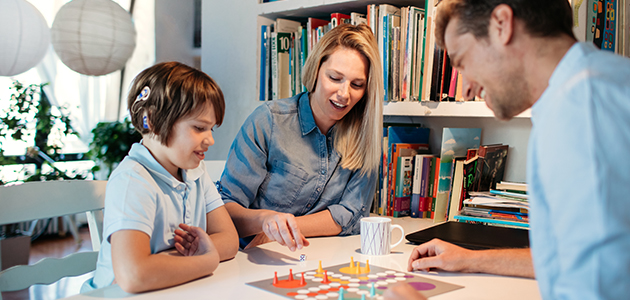Hands-on learning is one of the best ways to teach children how to become community builders. Gently reinforcing the ideals that you want to instill in them by creating family rituals that focus on positivity, kindness and compassion is “learning-by-doing” that benefits everyone.
Consider making some of these activities a tradition in your home:
- Practice random acts of kindness (RAKs). There are several ways to approach this. You might focus on doing small, spontaneous RAKs each day like smiling at everyone you meet, holding the door open behind you or giving an unexpected compliment. Or, you might choose to do one weekly or monthly RAK as a family that takes a bit more time and effort. For example, donating food to a shelter, picking up trash around town or fostering a dog or cat. Whatever you decide, make sure to sit down as a family and discuss what you plan to do, what you’ve done, and how you think your RAKs have helped infuse the world with more happiness. As the holidays approach, you and your family could focus on holiday-related RAKs to help make an impact on those who might be struggling at this time of year.
- Go tech-free. One night each week, commit to putting away all of your devices and shutting off all the screens so that you can truly connect with each other and strengthen your bond as a family. You might use this time to go for a family walk, play board games, read a book together or plan upcoming family adventures. You could start by making this a one-hour commitment, and gradually increase that time as everyone gets used to enjoying the tech-free evenings together.
- Introduce gratitude journaling. Journaling is a wonderful way to control and improve mental health. Focusing on gratitude by writing down at least five things you’re thankful for at the end of each week can help make both adults and children feel happier, sleep better and even feel better physically.1 Set aside a few minutes every Sunday night, or whatever evening works best for you, and encourage each member of your family to write down five things that they are truly grateful, including as much detail as possible. You can share what you’ve written with each other or keep them private – whatever works for your family.
- Volunteer together. Family community service projects help children understand how to recognize and respond to the needs of those around them. Visit MyForesters.com to find out about volunteer opportunities with fellow Foresters members in your area or sit down together and brainstorm ways to support people in need, local shelters or other charitable organizations in your community. Encouraging your children to become involved in volunteer work, even at a very young age, is one way to help infuse their life with the kind of joy that comes from living a meaningful and purpose-filled existence.
- Become a bucket-filling family. The idea, as explained in the book, How Full is Your Bucket?2, is that every person has an invisible bucket hanging over their head. That bucket fills with good thoughts and happy feelings when you do something good for someone, and when someone does something nice for you. But if you do something mean or unkind to another person, you dip into their bucket and take a little of their happiness out.
Bucket-filling families commit to doing things that fill up each other’s buckets to keep them bursting with happiness and positive energy. Encouraging children to think of the impact their actions have on others by using the bucket analogy is a great way to encourage compassion and empathy. To help remind and encourage children, you can write a list of all the simple ways to fill up buckets:
- Doing my chores
- Saying please and thank you
- Helping out my sister or brother
- Sharing my toys
- Listening to mom and dad
- Reading books together
Raising children to become compassionate, responsible adults is a marathon and not a sprint. Incorporating simple, but meaningful, kindness rituals into your family’s everyday life will help kids learn and grow, one small act at a time, while strengthening your bond as a family in the process.
SOURCES
1 https://greatergood.berkeley.edu/article/item/tips_for_keeping_a_gratitude_journal
2 https://www.busykidshappymom.org/bucket-fillers-families/
417962A CAN/US 11/20



